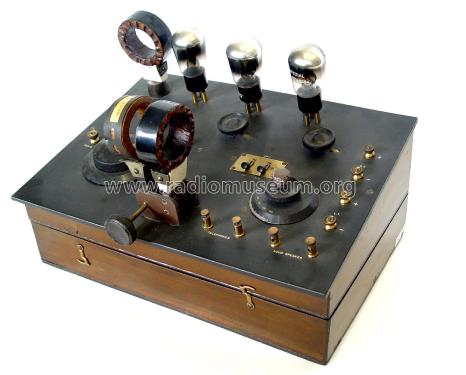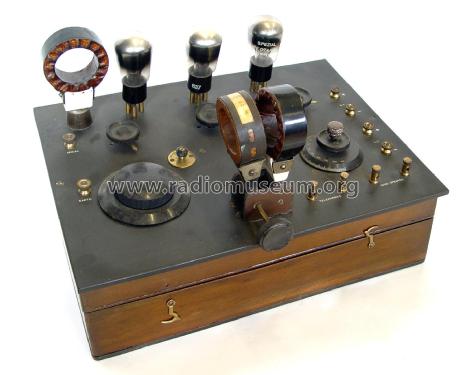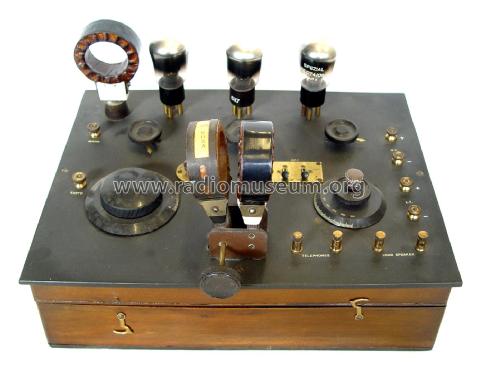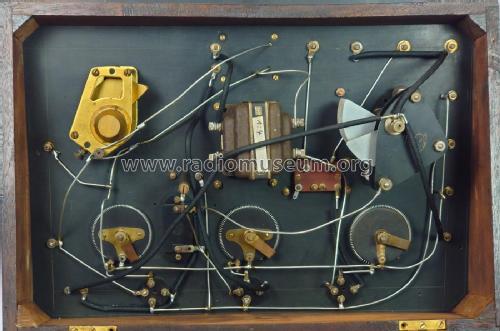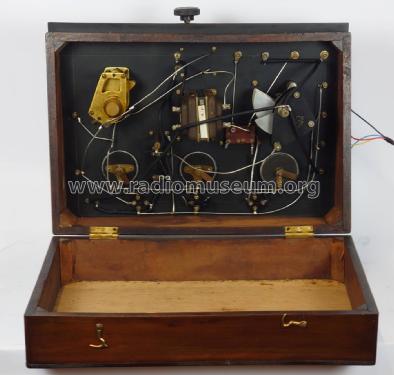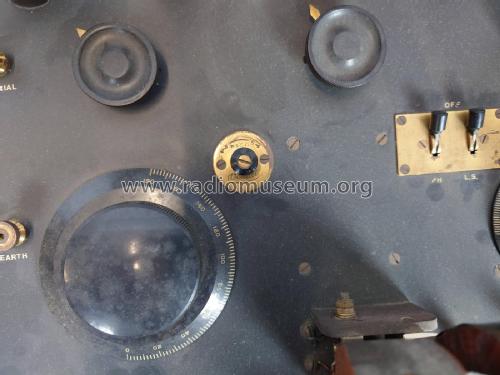TRF Receiver
Unknown - CUSTOM BUILT: GB
- Pays
- Royaume Uni
- Fabricant / Marque
- Unknown - CUSTOM BUILT: GB
- Année
- 1926 ??
- Catégorie
- Radio - ou tuner d'après la guerre 1939-45
- Radiomuseum.org ID
- 352703
- No. de tubes
- 3
- Principe général
- Récepteur TRF - par réaction (régénératif)
- Gammes d'ondes
- Bandes en notes
- Tension / type courant
- Piles (rechargeables ou/et sèches) / 4, 80 Volt
- Haut-parleur
- - Ce modèle nécessite des HP externes
- Matière
- Boitier en bois, lampes visibles
- De Radiomuseum.org
- Modèle: TRF Receiver - Unknown - CUSTOM BUILT: GB
- Forme
- Modèle de table à panneau incliné
- Dimensions (LHP)
- 410 x 280 x 310 mm / 16.1 x 11 x 12.2 inch
- Remarques
-
3-Valve Battery Powered TRF Receiver Circa Mid 1920s
TRF receivers were the most common type of radio receiver in the early days of radio broadcasting. They are relatively simple in design, using a tuned radio frequency stage, a detector stage, and an audio amplifier stage.
The reaction in this receiver is possibly controlled by the twin honeycomb coil coupler. The coil coupler is used to tune the receiver to the desired radio frequency. The reaction is a type of regeneration that can be used to increase the gain of the receiver. However, it can also make the receiver more difficult to tune.
The receiver has both loudspeaker and headphone connections. This means that it can be used for either loudspeaker reception of local stations or headphone reception of distant stations.
The frequency band of operation and manufacturer of this receiver are unknown.
- Poids net
- 4.8 kg / 10 lb 9.2 oz (10.573 lb)
- Auteur
- Modèle crée par Musée des Radios Museum. Voir les propositions de modification pour les contributeurs supplémentaires.
- D'autres Modèles
-
Vous pourrez trouver sous ce lien 117 modèles d'appareils, 107 avec des images et 10 avec des schémas.
Tous les appareils de Unknown - CUSTOM BUILT: GB
Collections
Le modèle TRF Receiver fait partie des collections des membres suivants.
